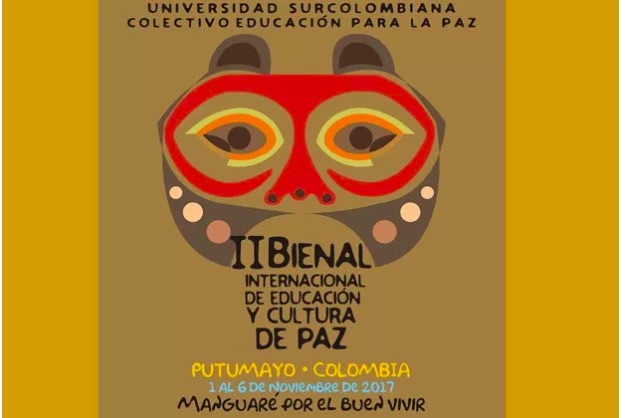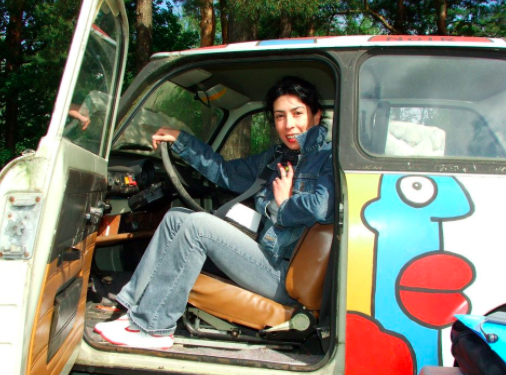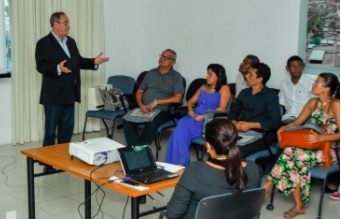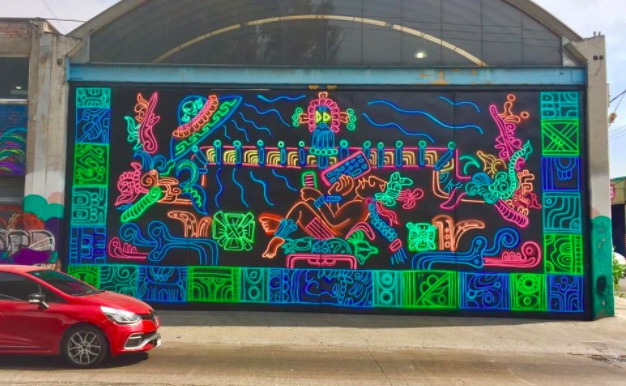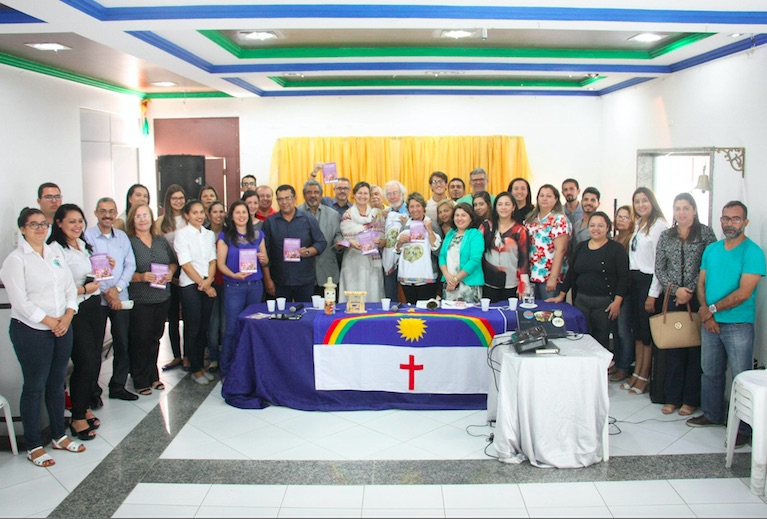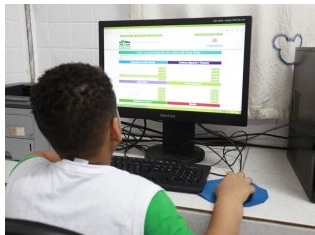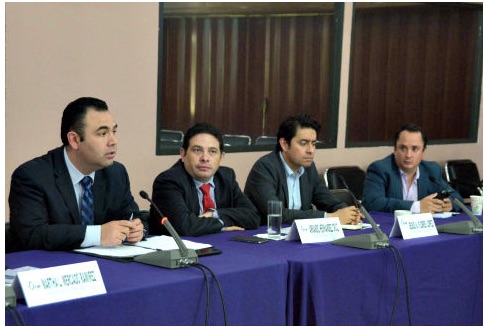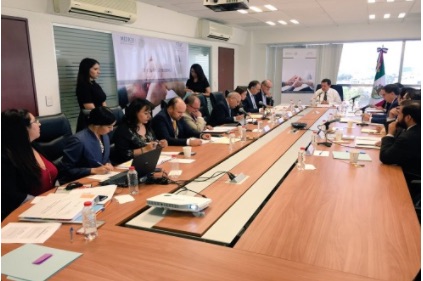FREE FLOW OF INFORMATION
A survey by CPNN
The following 58 events in 16 Latin America and Caribbean countries were listed in “Google News” during the week of September 21-28 under the key words “International day of peace” and “Dia internacional de paz,” and “Dia internacional da paz.” This also includes some events listed on the websites of the Global Feast for Peace, and event map for the International Day of Peace.
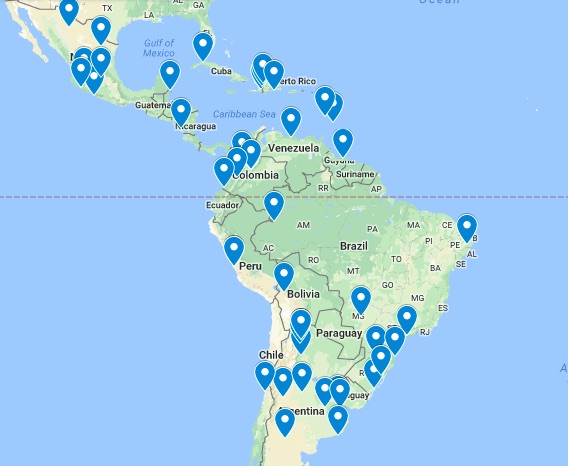
Here are excerpts from the articles.
GUAYANA : A peace walk and concert in observance of International Peace Day was held by Ministry of Social Cohesion on Thursday, September 21, 2017. Under the theme, “Together for Peace: Respect, Safety, and Dignity for All” the march which commenced from Parade Ground and concluded at the National Museum, saw a wide cross-section of individuals participating, including those from the Guyana Karate School, Glaston Twirling Dancerettes Company.
ST LUCIA : The Commonwealth Youth Peace Ambassador’s Network (CYPAN) St. Lucia’s Chapter joined the United Nations in celebrating International Day of Peace under the theme “Together for peace, respect, safety and dignity for all”. The organization is hosting an inter-district essay competition organized primarily for Secondary School students. Students are encouraged to write a 100 – 150 word essay, using the topic: “What Does a Peace Building Commonwealth Mean to Our Business Community”.
(Note: From this point on, the events are translated by CPNN from the Spanish or Portuguese original)
CASILDA, ARGENTINA : This 21st of September is celebrated around the world as the International Day of Peace, and at the request of the Ombudsman of Santa Fe, in our city, as in many others in the province, the Flag of Peace will be hoisted in the Plaza Casado de los Mástiles, at 9:30 am. This will happen this Thursday, at 9:30 am, and the event will be attended by the municipal mayor, Juan José Sarasola, and officials of the City Council.
SALTA, ARGENTINA : With a symbolic walk and different activities, the International Day of Peace was commemorated under the motto “We celebrate the Pulse of Peace”, with the participation of different groups committed to the construction of a Culture of Peace. The activity, which included the Ministry of Human Rights and Justice along with other organizations, began with a symbolic walk to the Monument of Güemes, where the organizers of the event raised the flag of peace and carried out activities alluding to the day.
Other descriptions of peace day activities in Argentina were reported from CÓRDOBA and NECHOCHEA
CAMPO GRANDE, BRAZIL : With cultural performances of music and dance, 850 students of the municipal school “Vanderlei Rosa de Oliveira”, in the neighborhood Novo Maranhão, celebrated the International Day of Peace, celebrated on Thursday (21). In all, the event brought together an audience of over a thousand people. . . . Children from preschool to grade 9 presented numbers with songs about peace. . . . In another presentation, the students danced holding candles, which symbolized the light needed to illuminate the decisions of humanity.
CANOAS, BRASIL : The Directorate of Policies for Diversity and Traditional Communities, in partnership with the Municipal Council for the Rights of Children and Adolescents of Canoas (Comdica) and the NGO Parceiros Voluntários, on September 21 the Walk of Peace. The path of the walk leaves the Emancipation Square, in front of the City Hall. . . The initiative is part of the Arte Legal project, a social intervention that aims to inform, sensitize and mobilize citizens of Cano for the implementation of Law 13.185 / 15, known as the Law to Combat Bullying.
CARUARU, BRASIL : The International Day of Peace was celebrated in Caruaru with a Walk for Peace, on the afternoon of Thursday 21. Thousands of people followed the Walk from the railroad station through the main streets of the city center to Marco Zero. Public authorities, private institutions and associations, trade unions, organizations gathered in forums with representatives of the judiciary, councilors, rights advisers, artists and the community.
ITAJAÍ, BRASIL : Next Thursday (21), when the “International Day of Peace” is celebrated, 5th year students of the Basic School develop the “Pinwheels for Peace” project. . . . The windbreakers will bring messages about peace, anti-bullying and non-violence, and will be distributed to the population. There are also moments of reflection on peace, artistic presentations, recitation of poetry, as well as the offering of white balloons, face painting and the distribution of tree seedlings. . . . Another action planned by the promoters will be the delivery of leaflets releasing phrases from peacemakers such as Martin Luther King, Mahatma Gandhi, Nelson Mandela, Mother Tereza of Calcutta and Anne Frank.
PELOTAS, BRASIL : The City Hall and the Religious Diversity Committee are organizing the celebration of World Peace Day on Thursday beginning at 13.30 in the Baronesa Park. The event includes the Alberto Rosa School Band and capoeira workshop, the Areal student orchestra, Musical performance of Escola Anchieta, a Hip Hop Presentation, a Presentation of Angels and Cherubs, the Brigade Band, a Culture of Peace closure, and the UNESCO message.
SÃO PAULO, BRASIL : This Saturday (23/9), at the internal garden of the Courtyard of the College, in the center of the capital of São Paulo, leaders and representatives of different religions will meet with a single objective: to ask for and to emanate world peace. Among them are Assembly of God, Buddhism, Candomblé, Catholicism, Spiritism, Hinduism, Presbyterian Church, Islam, Umbanda. The “Interreligious United Act for Peace” is organized by the Commercial Association of São Paulo in celebration of the International Day of Peace.
Other descriptions of peace day activities in Brazil were reported from PASSOS MAIA and PORTO ALEGRE.
BOGOTA, COLOMBIA : On September 21, as part of the International Day of Peace, the Chamber of Commerce of Bogotá and the Mayor of Bogotá, as well as the Ministry of Culture and allied entities, launch the general agenda that seeks to reaffirm the title it holds “Bogota as World City of Peace,” assigned during the 16th World Summit of Nobel Peace Laureates, held in February this year. . . . The agenda is a series of activities and programs that have been developed during the year and are scheduled until 2018, with which it is hoped to continue activating citizen participation around the dialogue on construction and reconciliation in the city.
(Survey continued in right column)
( Click here for the Spanish version.)
Question for this article
What has happened this year (2017) for the International Day of Peace?
(Survey continued from left column)
SAN ANDRÉS DE TUMACO EN NARIÑO, COLOMBIA : The Youth Network “This is Peace Too” in Tumaco, is carrying out various activities within the framework of the peace week, September 19, 20 and 21 as part of the strategy to reflect on the situation that our country and transmit messages about forgiveness and reconciliation. They are performing activities such as staging and theater image with a gallery of body images. Young people who are part of the “Project Use Your Power to Build Peace” are also participating in the Youth Encounter for Peace in Tumaco, where it has been possible to exchange ideas with other young people with different youth processes for peace that take place in the surrounding municipalities, Several cultural activities have been carried out, such as murals, ancestral recovery through women’s songs and young songwriters, actions that favor the integration of communities and the construction of healthy spaces for the population.
SAN JOSE, COSTA RICA : As part of the celebration of the International Day of Peace, nearly 200 young people from all over the country gathered at the National Cultural Center where the results of the fourth edition of “Song for Peace” were presented. . . . In total 60 students from the seven provinces of the country participated in the contest and an artistic camp with renowned national artists. “Only with a word” theme of the young Jessica Matus Moreno of the Professional Technical College of the East obtained the first place of the contest.
HABANA, CUBA : Members of the project “Sociocultural Communication and Activism Join Us!” visited a Havana educational center to celebrate together with students and teachers the International Day of Peace, held every September 21. . . . Artists of the popular program Sonando in Cuba, transmitted by the Cuban Television, talked with students and teachers. . . For her part, Alodia Suárez, director of the school for five years, said that. . . “In a fun and attractive way, knowledge on various topics such as non-violence, gender equality, environmental protection, the rights of children and people with disabilities, among other issues can be transmitted”.
SAN SALVADOR, EL SALVADOR : Celebration of the international day of peace with a colorful act in our capital (video report).
TECOMÁN, MÉXICO : The municipal coordinator of the Program for the Care of Girls, Children and Adolescents (PANNAR) Lluvia María Bueno Sánchez, stressed the importance of students promoting peace among schoolmates, as well as in the family. . . Thus a group of children from the Paladins of the Revolution primary were responsible for painting the mural commemorating the International Day of Peace held on September 21. In the mural highlighted values such as love, respect, understanding, tolerance, patience, responsibility, smile, among others.
CHETUMAL, MÉXICO : More than 300 people gathered in front of the Museum of Mayan Culture to commemorate September 21 International Day of Peace, with the participation of different civil organizations and students. . . . There were hundreds of children who came from different Scout groups, with their different banners alluding to peace. In the event, also came students of the College of Bachelors, who formed their own contingent as well as a motorcyclists club. . . . The interviewee commented that for two months they have been organizing for this day that can not go unnoticed in order to make citizens aware that in the current world, Mexicans and especially children, we want peace!
CHIHUAHUA, MÉXICO : As part of the commemoration of the “International Peace Day”, the Secretariat for Social Development, through the Cohesion Coordination of Social Cohesion and Citizen Participation, held an awareness event at the Francisco Javier Torres Arellano Elementary School to encourage mediation between the new generations. Laurencio Barraza Limón, Coordinator of Social Cohesion and Citizen Participation, said that this act is part of a series of trainings that are being developed so that new generations know that there are peaceful ways to solve any type of conflict in their environment. The official added that at the moment, the state agency implements this action in 20 primary, secondary and preparatory institutions of the City of Chihuahua with the intention of extending the coverage to about 60 schools and gradually extend to other municipalities .
MANAGUA, NICARAGUA : Thousands of balloons along with paper doves were launched in the gardens of the National Autonomous University of Nicaragua (UNAN-Managua), by students and authorities of the Embassy of the Russian Federation in Nicaragua, within the framework of the celebration of the World Day of the Peace. “For me this day is very important. We are firm believers and promoters of peace” said Alexander Sidorov, Second Secretary of the Russian Embassy. “In World War II, 26 million Russians died, and that is why we do not want wars, we want peace in the world.: On each little bird that flew on a balloon was the name of a Russian person killed in the war as a tribute to those men and women who contributed to the end of the armed conflicts at that time. The UNAN-Managua Chancellor, Ramona Rodríguez, pointed out that Nicaraguan youth are very committed to the country’s development and recognize that to achieve that, it is necessary to maintain and strengthen peace.
LIMA, PERU : With dance music and an artistic show, Chimbote celebrated yesterday, the International Day of Peace. Among the participating groups were the municipal creche “Cruz de la Paz” and Amigas de Chimbote, members of the Integral Center for the Elderly (CIAM) as well as members of the Civil Association of the “Perpetual Relief for the Disabled”, the Food Complementation Program, the Glass of Milk Program, and IEP students “My Good Jesus.” The representative of the Provincial Municipality, Paola Huamán, stressed the importance of placing peace on the agenda, especially in situations of social problems and violence, such as those experienced in the region.
CARACAS, VENEZUELA : To celebrate the International Day of Peace, a concert was held at the Teatro Principal in Caracas with the participation of several popular artists, according to the Venezuelan News Agency. Delcy Rodríguez, accompanied by singer-songwriters like Lilia Vera, Luisiana Pérez, Fabiola José, Daisy Gutiérrez, Amaranta Pérez, Roque Valero and Leonel Ruíz participated in the concert organized by the National Constituent Assembly (ANC). . . . The activity began with the opening speech of the constituent Roque Valero, who highlighted the Government’s efforts to protect the stability of the nation, especially after the installation of the ANC that aims to promote a dialogue with all sectors. Also present were Father Numa Molina and Luis Milagro, mother of David Vallenilla, murdered during the street actions promoted by extremist sectors of the opposition.
In addition to the above events, there are a number of events in Latin America and the Caribbean listed on the event map for the International Day of Peace, including an assembly in ST MICHAEL, BARBADOS, music in CALI, COLOMBIA, meetings and music in MAGDALENA, COLOMBIA, school activities in MONTERREY, MEXICO, meditation in SANTO DOMINGO, DOMINICAN REPUBLIC, activities in KINGSTON, JAMAICA and a student peace march in SAN JOSE, COSTA RICA.
Many cities and communities are members of the International Peace Cities network and the following are listed on the Global Feast Map as celebrating a feast to mark the International Day of Peace:
ARGENTINA: Buenos Aires, Vicente Lopez, Tigre, San Salvador du Jujuy, Moron, Escobar, Junin, Rivadavia, La Paz, San Rafael, Neuquen, Villa de Merlo, Carpinteria, La Carolina, Los Molles, San Miguel de Tucuman, Monteros, San Isidro and Adrogue.
HAITI: Port-au-Prince, Hinche, Fort Liberté, Croix-des-Bouquets
MEXICO: Guadalajara, Zihautanejo, Querétaro
COLOMBIA : Medellin, Bogotá, Cajicá, Leticia
BARBADOS: Bridgetown
